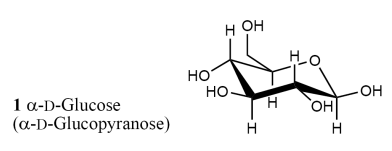Chapter . Impact 2.1
Impact…ON BIOLOGY I2.1: Food and energy reserves
The thermochemical properties of fuels and foods are commonly discussed in terms of their specific enthalpy, the enthalpy of combustion per gram of material. Thus, if the standard enthalpy of combustion is \(\Delta_{\mathrm c}H^\ominus\) and the molar mass of the compound is M, then the specific enthalpy is the positive quantity |\(\Delta_{\mathrm c}H^\ominus\)/M|. Table I2.1 lists the specific enthalpies of several fuels.
| Fuel | Combustion equation |
\(\Delta_{\mathrm c}H^\ominus\)/
(kJ mol− 1) |
Specific enthalpy/ (kJ g−1) |
Enthalpy density/ (kJ dm−3) |
|---|---|---|---|---|
| Hydrogen | H2(g)+1/2 O2(g) → H2O(l) | −286 | 142 | 13 |
| Methane | CH4(g)+2 O2(g) → CO2(g)+2H2O(l) | −890 | 55 | 40 |
| Octane | C8H18(l)+25/2 O2(g) → 8 CO2(g)+9H2O(l) | −5471 | 48 | 3.8 x 104 |
| Methanol | CH3OH(l)+3/2 O2(g) → CO2(g)+2H2O(l) | −726 | 23 | 1.8 x 104 |
A typical 18–20 year old man requires a daily input of about 12 MJ; a woman of the same age needs about 9 MJ. If the entire consumption were in the form of glucose (1; which has a specific enthalpy of 16 kJ g−1), that would require the consumption of 750 g of glucose for a man and 560 g for a woman. In fact, digestible carbohydrates have a slightly higher specific enthalpy (17 kJ g−1) than glucose itself, so a carbohydrate diet is slightly less daunting than a pure glucose diet, as well as being more appropriate in the form of fibre, the indigestible cellulose that helps move digestion products through the intestine.

Fats are long-chain esters like tristearin (beef fat). The enthalpy of combustion of a fat at around 38 kJ g−1 is much greater than that of carbohydrates and only slightly less than that of the hydrocarbon oils used as fuel (48 kJ g−1). Fats are commonly used as an energy store, to be used only when the more readily accessible carbohydrates have fallen into short supply. In Arctic species, the stored fat also acts as a layer of insulation; in desert species (such as the camel), the fat is also a source of water, one of its oxidation products.
Proteins are also used as a source of energy, but their components, the amino acids, are often too valuable to squander in this way, and are used to construct other proteins instead. When proteins are oxidized (to urea, CO(NH2)2), the equivalent enthalpy density is comparable to that of carbohydrates.
The heat released by the oxidation of foods needs to be discarded in order to maintain body temperature within its typical range of 35.6–37.8°C. A variety of mechanisms contribute to this aspect of homeostasis, the ability of an organism to counteract environmental changes with physiological responses. The general uniformity of temperature throughout the body is maintained largely by the flow of blood. When heat needs to be dissipated rapidly, warm blood is allowed to flow through the capillaries of the skin, so producing flushing. Radiation is one means of discarding heat; another is evaporation and the energy demands of the enthalpy of vaporization of water. Evaporation removes about 2.4 kJ per gram of water perspired. When vigorous exercise promotes sweating (through the influence of heat selectors on the hypothalamus), 1–2 dm3 of perspired water can be produced per hour, corresponding to a heat loss of 2.4–5.0 MJ h−1.